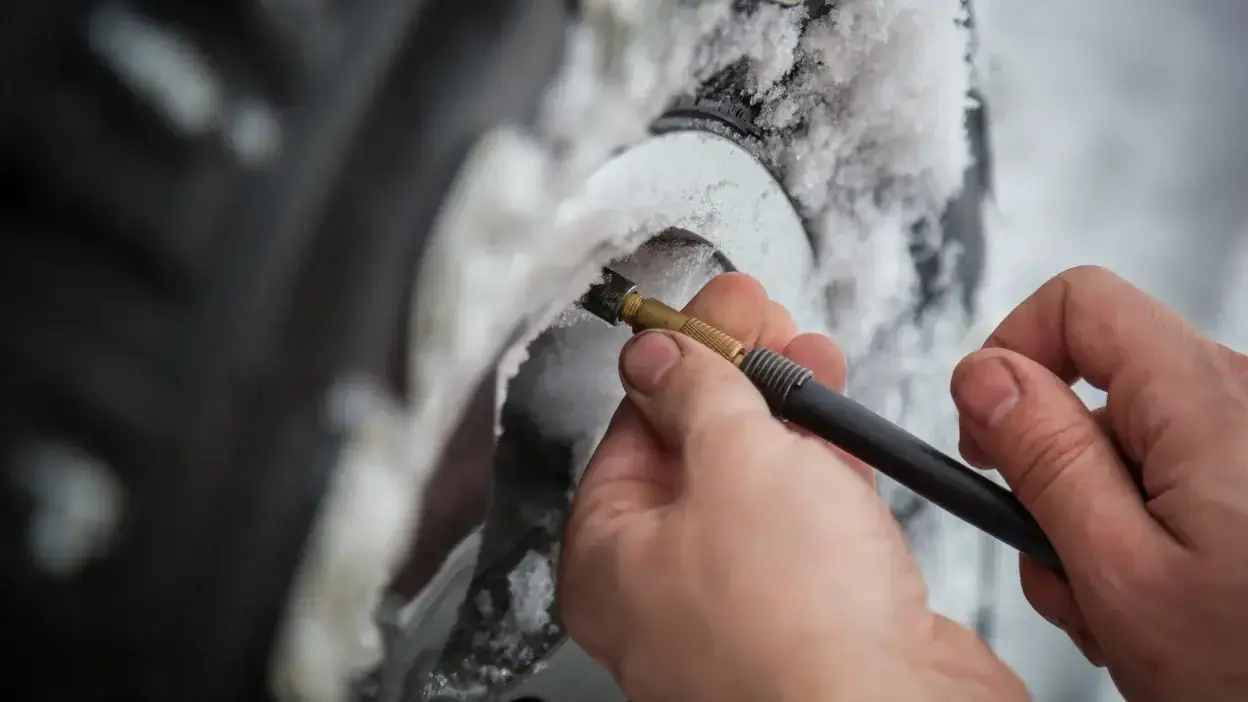
Winter can be tough on vehicles, but with the right preparation, you can ensure your car stays in peak condition throughout the cold months. In this comprehensive guide, we'll walk you through essential steps to get your car winter-ready, helping you drive safely and confidently no matter what the season throws your way.
Check Your Tires

Inspect Tire Tread
Good traction is crucial on icy and snowy roads. Ensure your tires have sufficient tread depth; a minimum of 3mm is recommended for winter driving. You can use a tread depth gauge or the penny test to check this.
Switch to Winter Tires
If you live in an area with heavy snowfall or icy conditions, consider switching to winter tires. These tires are specifically designed to provide better grip and handling in low temperatures.
Maintain Proper Tire Pressure
Cold weather can cause tire pressure to drop. Check your tire pressure regularly and inflate them to the recommended levels. Properly inflated tires ensure better contact with the road, improving safety and fuel efficiency.
Inspect Your Battery

Test Battery Health
Cold temperatures can reduce your battery’s power output. Have your battery tested to ensure it’s holding a charge properly. If it’s more than three years old, consider replacing it to avoid unexpected failures.
Clean Battery Terminals
Corrosion on battery terminals can prevent your car from starting. Clean any buildup from the terminals and ensure the connections are tight.
Prepare Your Fluids

Antifreeze
Ensure your coolant system is filled with the appropriate mix of antifreeze and water. This prevents the coolant from freezing and protects your engine from extreme cold.
Windshield Washer Fluid
Use a winter-specific windshield washer fluid that won’t freeze. Keep an extra bottle in your trunk in case you run out.
Oil Change
Consider using winter-grade oil that remains fluid at lower temperatures. Check your owner’s manual for the manufacturer’s recommendation.
Inspect Wipers and Defrosters

Replace Wiper Blades
Good visibility is essential in winter. Replace your wiper blades if they show signs of wear, and consider winter wiper blades designed to handle snow and ice.
Check Defrosters
Ensure your front and rear defrosters are working correctly to keep your windows clear.
Protect Your Car's Exterior

Wash and Wax
Before the first snowfall, give your car a thorough wash and apply a coat of wax. This helps protect the paint from road salt and grime.
Underbody Protection
Consider an underbody sealant to prevent rust caused by salt and moisture.
Stock an Emergency Kit

Prepare an emergency kit to keep in your car throughout the winter. Include the following items:
- Warm blankets and extra clothing
- Non-perishable snacks and bottled water
- Flashlight with extra batteries
- First aid kit
- Jumper cables
- Ice scraper and snow brush
- Small shovel
- Traction aids, like sand or kitty litter
- Reflective triangles or flares
Plan Your Routes and Stay Informed

Weather Updates
Always check the weather forecast before heading out. Avoid driving in severe conditions if possible.
Safe Routes
Plan your routes to favor main roads that are more likely to be plowed and salted.
Drive Safely

Slow Down
Reduce your speed and increase the distance between you and the vehicle in front of you. This gives you more time to react to slippery conditions.
Smooth Maneuvers
Avoid sudden movements. Accelerate, brake, and steer smoothly to maintain control on slick roads.
Keep Your Gas Tank Full
A fuller tank helps prevent moisture from forming in the gas lines and freezing. It also ensures you have enough fuel to keep the engine running and stay warm if you get stuck.
Preparing your car for winter is crucial for ensuring your safety and maintaining your vehicle’s performance during the cold months. By following these steps, you can drive confidently, knowing your car is ready to handle whatever winter throws your way. Stay safe and enjoy the season!